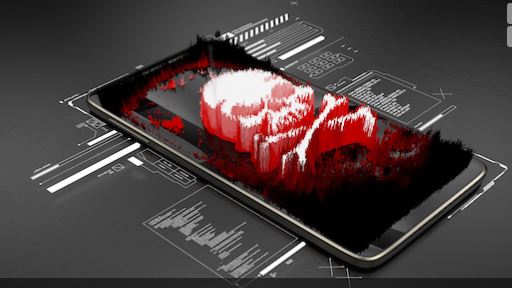New business? You’re going to need some basic software!
In this modern-day and age, it may seem that small businesses do not require a plethora of technological tools in order to succeed, but it’s worth investigating which technologies can give you an edge. This is especially crucial if you are not offering a niche product or service and have to compete with an army of existing players in your industry.
Accounting, CRM, marketing, analytics, taxation and other useful software may have just levelled the playing field between small and big businesses. The challenge is to choose the right one to help you grow quickly at the least expense.
You will, nevertheless, if you are even to make a first impression, need some basic software regardless of your trade.
HERE IS WHAT YOU WILL NEED
Almost everybody needs some kind of online presence. You’re a business and while social media is helpful (more on that later), a website is where you will be found by prospective clients or business partners. You can build one easily these days via a paid content manager provider such as WordPress or Wix.
They will even provide and host your domain if you don’t have one.
If you do not, however, have the time nor the energy to create one yourself, there are cost-effective alternatives such as outsourcing the building to a web-designer. They can do it remotely and the safest way would be through a regulated marketplace such as Fiverr* or Upwork.
*Debunqed can recommend a designer known as aceholder on Fiverr.
Email
You need to be contactable. In the old days, you got away with Yahoo or Google email but now you need an email service that can host a domain. The free emails are also not secure and subjected to heaps of spam.
Email hosting is a service in which your email messages and associated files are all stored on a server. When you receive an email to your website’s domain address, that email is routed across the Internet and stored on the recipient server.
A hosting service stores the files that make up a website on a data server which then uploads them directly to the web.
This gives you an Internet connection and way for your customers to access the site through a domain name.
Web hosting services often come with a slew of options for designing sites. These include the one-click installation of supported applications such as a service mailbox. Wix partners with Microsoft’s Office 365 for mail hosting whilst WordPress works seamlessly with Gmail/GSuite.
Task Management System/ Job Manager
Being organised from the beginning isn’t a good idea; it’s a great idea! Get yourself a system which tracks your sales and logs the deliverables that each employee completes.
There are an array of CRM solutions focusing on different tasks from customer services or sales to project management and full-on finance and back office (ERP) operations (more on this later).
The key is to start small many of these offer trials but also some even offer a free package naturally with limited functionality. Figure out which tasks are important in order to choose the right package to handle your scheduling, sales and tasks. A simple calendar/scheduler via MS Outlook and Office 365 (Microsoft Bookings) can be a good place to start for a paid but fully functional service.
Payroll and Accounting Systems
You need to keep accurate books and not to rip off your employees. You’re a start-up; play the numbers by the books. And a word of caution: don’t ever cook the books!
There is a huge choice of accounting (and back office) systems to choose from. The big names are probably out of reach so like a CRM system, you might want to shop around and start with smaller but a reputable brand like Quickbooks.
But if you go for an Office 365 solution, you might as well look into something like Dynamics 365. One of their entry-level finance packages (Business Central) has all the ‘bells and whistles’ for a Startup to help get your books up to date for the taxman/audit.
You also need to monitor your payroll – this service can be added by upgrading to a bigger package under Microsoft Dynamics family. You could also shop around for payroll software if you are on a tight budget.
Project management and support logging system
Once you build up a workable database of existing and potential clients, you will require some kind of logging system to handle customer queries.
This will help you keep tags of what customers are having issues with. If they are repeated issues, then you know there is a recurring problem with your operations or an aspect of your business.
A good ticketing system will allow you to keep a knowledge base with instructions to help your staff with how to deal with recurring issues quickly.
Shopping cart software
If your products are sold online or does not come from a physical store, this is the mandatory software that enables you sell goods online. It is designed to quickly process debit and credit cards transactions but also allows your customers to use their PayPal and other payment methods – even Cryptocurrency.
A good shopping cart package also does inventory management, calculates packaging costs, shipping costs and taxes.
Security and Anti-Virus software
Always protect your Internet connection and your sensitive data against viruses, spyware, malware, worms and Trojans.
Most of the packages mentioned before come with in-built security measures such as sign-in authentication.
But these are not enough and you will need to source software to prevent a hack if you are dealing with extra sensitive data like patents, medical and financial records/accounts. Read our feature on Online Threats for more on this.
Cloud storage
This is a place where you can store large files as well askeep backups of files. Hardware can break. You could drop your 2-terabyte portable flash drive but at least your work will be safe in the cloud.
Once in the cloud, things can get disorganised (many files and folders) and sorting them can become a pain. The top file storage providers include, Microsoft’s SharePoint Online and OneDrive; Google’s Drive, Amazon’s S- series and Dropbox.
There are some really great add-ons like a Digital Asset Management (DAM) tool for those dealing daily with tons of documents and images by Pic.io. This software works specifically with GoogleDrive.
Social media
We have by now affirmed that you need a CRM system. With many choices of companies to buy products from for example, treating individual customers’ needs is very important.
A good CRM system will help you reach out to your customers where ever they are – online or offline. This is known as Social Engagement.
That, coupled with a powerful Business Intelligence tool, can help you leapfrog over your competitors with useful insights such as peak traffic times on your website, purchase habits and other characteristics of your client that will help you accurately predict potential revenues.
Find the best CRM platform that allows for social engagement, then set up whatever social network accounts that suit your business.
Webinar services
Remember you are doing business with groups from around the world.
Online communication tools, therefore, enable you conduct presentations and meetings over the Internet. This saves time and money associated with travelling costs whilst giving you access to markets outside your area, city or country.
Some of the most popular/effective communication tools includes those included in the Microsoft (Skype and Teams) and Google (Hangouts & Voice) bundles. There are also free standalones like Zoom.
Depending on your frequency of calls and audience size needs you can stick with the free version and then scale up to a paid subscription later. You can also run training sessions and product demonstrations and even replace your whole phone system with them.
Online Surveys and other Marketing Tools
Marketing is is the lifeblood of a company. It’s a key sales-driver and if you aren’t selling, you’re going out of business! Conduct market research using online tools such as SurveyMonkey and collect emails through opt-in forms. These valuable insights can be used in targeted email marketing campaigns.
The most advanced and widely recognised mail marketing tool is Mailchimp. It starts with a free version with 7 marketing channels and goes up to $299 per month for large companies with 200000-plus contacts. Most bundled Office solutions will allow you to add Mailchimp as a plug-in to your existing mailbox.
Conclusion
Technology constantly changes and it’s hard to keep up – so don’t. Get the basics right first and add technological services and tools as you grow. Rather understand what each button does first before you spend money on a whole super system.






































